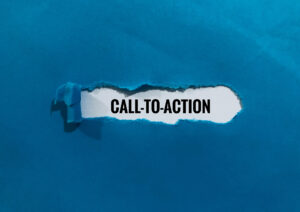How to Create a Compelling Call to Action
How to Create a Compelling Call to Action

Creating a compelling Call to Action (CTA) is more important than ever. A CTA is the pivotal moment in your marketing efforts where you invite your audience to take a specific action—whether it’s signing up for a newsletter, making a purchase, or scheduling a consultation. A well-crafted CTA can be the difference between a fleeting visitor and a loyal customer. Here’s how you can create a CTA that not only captures attention but drives results.
Understand Your Audience
Before you even begin crafting your CTA, it’s crucial to understand who your audience is and what they want. Conduct audience research to gather insights into their preferences, pain points, and behaviors. This information will guide you in creating a CTA that resonates with their needs and desires.
Use Action-Oriented Language
The language you use in your CTA should be clear, concise, and action-oriented. Phrases like “Buy Now,” “Get Started,” or “Download Today” are direct and tell the audience exactly what to do. Avoid vague or passive language that could confuse or dissuade potential customers.
Create a Sense of Urgency
Incorporating a sense of urgency can encourage immediate action. Words like “Limited Time Offer,” “Hurry, Only a Few Spots Left,” or “Act Now” can motivate users to act quickly rather than putting off the decision. Just make sure the urgency is genuine to maintain trust.
Highlight the Benefit
Your CTA should not just tell people what to do but also explain why they should do it. Highlight the benefit or value that they will receive by taking the action. For example, instead of just saying “Subscribe,” try “Subscribe to Get Exclusive Tips and Discounts.”

Design for Visibility
The design of your CTA is just as important as the wording. Ensure that your CTA stands out visually from the rest of the content. Use contrasting colors, bold fonts, and ample white space to make it easily noticeable. The button or link should be large enough to be clicked easily on both desktop and mobile devices.
Place Strategically
The placement of your CTA can significantly impact its effectiveness. It should be positioned where it naturally fits within the content flow. Common locations include at the end of a blog post, in the middle of a landing page, or as a pop-up. Test different placements to see which works best for your audience.
Leverage Social Proof
Incorporating elements of social proof, such as testimonials or user reviews, can enhance the effectiveness of your CTA. Showing that others have benefitted from taking the action you’re promoting can reassure potential customers and encourage them to follow suit.
Include a Clear Next Step
Your CTA should guide users smoothly to the next step in their journey. Whether it’s filling out a form, making a purchase, or downloading a resource, ensure that the process is straightforward and user-friendly. A seamless transition from CTA to action will help in retaining user interest and reducing friction.
Creating a compelling Call to Action requires a blend of understanding your audience, using persuasive language, and designing for impact. By focusing on clarity, urgency, and value, you can craft CTAs that not only catch attention but also drive meaningful actions. Remember, the effectiveness of your CTAs can always be improved through testing and optimization. With these strategies in place, you’ll be well on your way to turning prospects into loyal customers.


